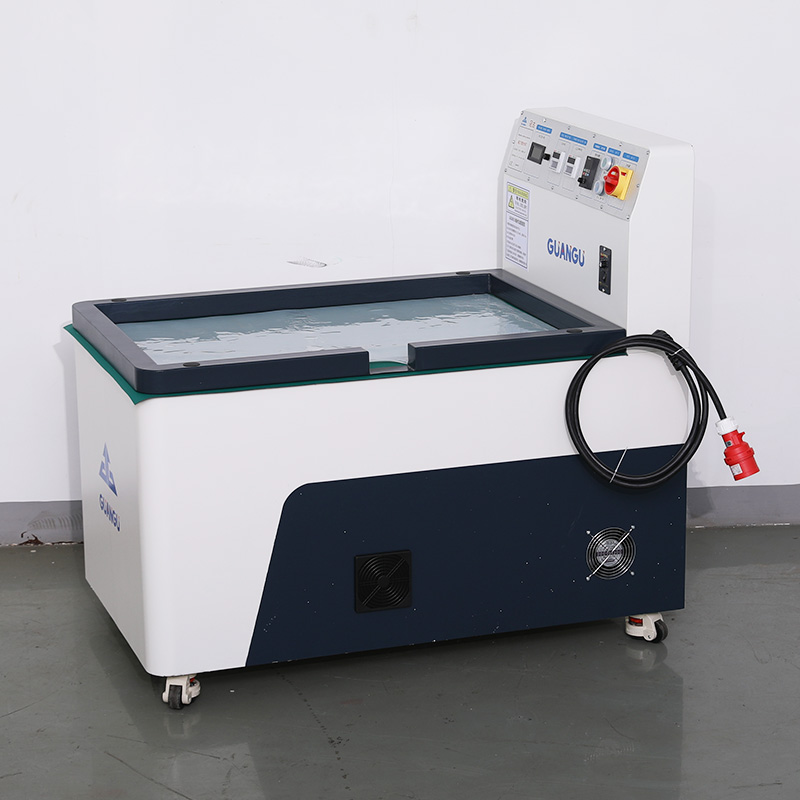As a CNC industry engineer, I recently purchased a magnetic polishing machine. After a period of use, I have a deep understanding of the performance, operation experience and application effect of this equipment in actual production. The following is my experience sharing.
Equipment selection and purchase background
In the CNC processing process, the surface treatment of the workpiece is a very important link. Traditional polishing methods are often time-consuming and labor-intensive, and it is difficult to handle workpieces with complex shapes. In order to improve production efficiency and ensure the surface quality of workpieces, I decided to buy a magnetic polishing machine. After market research, I chose a mid-to-high-end magnetic polishing machine with stable performance and a wide range of applications.
Equipment installation and commissioning
After the equipment arrived, the installation process was relatively simple. The manufacturer provided a detailed installation manual, and technicians provided remote guidance through video. The equipment occupies a small area and is suitable for the layout of our workshop. During the commissioning process, I set the magnetic strength, polishing time and polishing medium according to the steps in the manual. During the initial commissioning, I selected several workpieces of different materials for testing, including stainless steel, aluminum alloy and copper parts, to ensure that the equipment can meet diverse processing needs.

Operation experience-experience of using magnetic polishing machine
The operation of the magnetic polisher is very simple. The equipment is equipped with a touch screen control system, and users can set polishing parameters such as magnetic strength, polishing time and speed through the screen. The operation interface is intuitive and easy to understand, and even inexperienced workers can quickly get started. In actual operation, I found that the equipment responded quickly and the parameters were adjusted immediately, which greatly improved work efficiency.
Polishing effect
The polishing effect of the magnetic polisher is satisfactory. Compared with traditional manual polishing, magnetic polishing can evenly treat the surface of the workpiece, and even workpieces with complex shapes can achieve consistent polishing effects. The surface smoothness of the polished workpiece is significantly improved, burrs and oxide layers are removed, and the surface gloss reaches the expected standard. Especially for stainless steel and aluminum alloy workpieces, the polished surface is almost comparable to the mirror effect.
Production efficiency
After using the magnetic polisher, our production efficiency has been significantly improved. Traditional manual polishing of a workpiece may take more than ten minutes or even longer, while the magnetic polisher can be completed in just a few minutes. In addition, the equipment can process multiple workpieces at the same time, further shortening the production cycle. This is undoubtedly a huge advantage for a batch production workshop like ours.
Maintenance and Care
The maintenance of the magnetic polisher is relatively simple. The main components of the equipment, such as the magnetic generator and the polishing tank, are designed to be very durable. Daily maintenance mainly includes cleaning the polishing tank and replacing the polishing media. The manufacturer provides a detailed maintenance manual and has a regular maintenance reminder function to ensure that the equipment is always in the best working condition.
Cost-Benefit Analysis
Although the initial investment of the magnetic polisher is high, the benefits it brings in the long run are significant. First, the high efficiency of the equipment reduces labor costs and time costs. Secondly, the improvement of polishing quality reduces the scrap rate and further reduces production costs. Finally, the durability and low maintenance cost of the equipment also keep the total cost of ownership (TCO) within a reasonable range.
Improvement Suggestions
Although the overall performance of the magnetic polisher is satisfactory, there is still some room for improvement. For example, the noise control of the equipment can be further optimized to improve the working environment. In addition, the consumption rate of the polishing medium is relatively fast. It is recommended that the manufacturer provide more types of polishing media options to adapt to workpieces of different materials.
Conclusion-experience of using magnetic polishing machine
In general, purchasing the magnetic polisher is a wise decision. It not only improves our production efficiency, but also significantly improves the surface quality of the workpiece. The equipment is easy to operate, easy to maintain, and highly cost-effective. For the CNC industry, the magnetic polisher is undoubtedly a worthy investment. In the future, I plan to further explore more application scenarios of the equipment to fully realize its potential.









You must be logged in to post a comment.